The long-awaited update to the enthusiasts platform is here, meet the Core i7 5960X
To say X79 is getting long in the tooth would be putting it extremely mildly. X79 has been around a very long time and all the while the 8 and 9 series mainstream chipsets have come along carrying many features including an array of super speed USB 3.0 native chipset ports and more SATA 6G ports coming directly from the PCH while the enthusiast platform via X79 has been without any of these advances for the past 4 years. The mainstream chipsets such as the H and Z series get many respins and upgrades because as I see it they simply sell a ton more than the high-end chipset so needless to say being an extreme user myself I am very happy to see the newest X series chipset and Haswell-E CPU come along via the new X99 which you will be seeing come across these following pages.
X79 being 4 years in now, we as enthusiasts users expect something big to replace it and it looks like Intel is ready to deliver as the extreme high-end or High End DeskTop (HEDT) parts tend to be the most extreme you can get for consumer grade parts. Intel as you see above launched their first ever consumer “Desktop” 8 core CPU and on top of this it is an unlocked part which means some pretty nice overclocking should be capable here.
Here you can see the different model of Haswell-E based CPUs that will be initially available, and as of yet there has been no word as to whether there will be other models available but knowing Intel, somewhere down the line there will be more versions or other chips with reduced power consumption or other targeted skus. As you can see we are testing the 5960X which is the top of the charts with 20MB Cache and 8 cores with 16 threads via enabled Hyperthreading technology for a total 16 logical cores. As always the top end extreme chip carries a price premium coming in at a thousand dollars but there are some other K sku models which means unlocked for overclocking as well that have lesser cores and corresponding cache for lower prices. Do be mindful though as the lowest model sku the 5820K has less PCIe lanes at 28 total which could be a limitation for those users looking to run more than two graphics cards. It is worth noting that while the socket and CPU fitment looks somewhat similar the new X99 boards DO NOT support previous gen LGA2011 CPUs.
Thunderbolt 2
Intel has now pushed Thunderbolt 2 Capability into the new X99 based systems which doubles the spec of the previous gen Thunderbolt to 20Gb/s which is now 2x as fast as Thunderbolt and 4x as fast as USB 3.0 which is really nice not to mention the ability to daisy chain devices so that you can run multiple from a single cable. I like this especially since you can run external storage or other devices all through the same data stream since the likelihood of a single device being able to saturate a 20Gb/s line is very unlikely.
Intel’s new X99 Chipset
As stated in previous new CPU launch overviews Intel has pulled the plug on board production so now they make the key components but it’s up to board partners to make them into a consumer part. Intel seems to have focused a lot more of their attention as of late into the SFF (NUC) market and other mobile appliances. Be that as it may they keep cranking out innovation on the desktop side at least for now which leads to the things like you see below.
The X99 Chipset offers many new advances over the X79, such as support for up to 10 SATA 6G ports whereas the X79 only had two so a lot of board partners were adding additional controllers to the boards just to get some good storage options for the consumer. Now with 10 ports users can have plenty of high-speed storage and even a nicely sized SSD array with a mechanical drive storage array to back it up. On top of this the CPU has 40 lanes PCIe Gen 3 which allows for up to 5×8 PCIe slots which means a massive grouping of GPUs with a RAID card. That’s something not really possible before, but even now it wouldn’t really be without a PCIe extender but it does also open doorways for add-on devices which can occupy the extra 8 lanes such as add-on controllers or devices. Another area that got attention is the USB 3.0 capability as now native chipset ports come numbering up to 6 which is great as many new high-speed devices and storage are showing up.
Since we did not get a board from Intel on this go around I kept it fair and did the launch article for the CPU with the first X99 board that showed up to our testbench and that board was the ASUS X99 Deluxe. Keep an eye out as this board has some huge feature sets and it will have its own review very shortly.
Many thanks to Corsair for getting us some hands on time with their new Vengeance DDR4 2666MHz 16GB quad channel kit for this processor overview
As for motherboards do keep an eye out as shortly after the ASUS board arrived we got hands on with the much-anticipated MSI X99S Gaming 9 which has many awesome gaming oriented features so you should see a review coming up on that in the near future as well.
Intel Core i7-5960X Processor
The new Haswell-E CPU is based on 22nm architecture similar to what you have in the Haswell chips on the mainstream products you see now.
Here you can see the die layout which has the 8 cores with the shared L3 cache in the bed between them and the massive DDR4 based memory controller below with the IO, Uncore and etc above it all. There are likely to be larger dies soon on the server side as rumors have been floating around about up to 18 core or higher chips for that side.
Here is the 5960X CPU top and bottom and the first thing you will notice is the IHS looks quite a bit different from other desktop CPUs we have seen before. the IHS has large tabs coming off of it to allow efficient load spreading from the boards ILM which keeps the CPU firmly planted in the socket and excellent pressure against the LGA socket lands or pins.
Here you can see the wing on the IHS which is used by the ILM to hold the CPU in the socket and place pressure on the CPU to have good contact with the socket pins. This area is much larger than previous chips we have seen and this is likely to allow better spreading of the load for better mating into the socket.
Overclocking
For overclocking I only had one sample this go around and I had a kind of pre warning from ASUS that the common clock is between 4.4-4.6 on air/water on these chips with some exceptional samples pulling 4.7GHz capable without going extreme cooling.
Here you can see above that in order to hit 4.3GHz it only took around 1.24V which is only up .04V from the default loaded voltage of 1.2V. 4.4GHz was next and it too could run a 1.24V which was very cool however stepping to 4.5GHz required .05 more voltage to be fully stable which was a pretty big ramp up.
Pushing past 4.5GHz was a lesson in futility as no matte the voltage it simply stopped there so I guess I have a middle of the road chip and I hope to grab a few more once retails hit the shelves to see if I can find one a bit better than “Average”
| CPU Frequency | Voltage Required (Load) |
| 3.0GHz (Stock) | 1.200V |
| 4.3GHz | 1.24V |
| 4.4GHz | 1.24V |
| 4.5GHz | 1.29V |
| 4.6GHz | FAIL |
Here you can see a breakdown of the voltages applied to reach the target speed, but do note that I cannot verify if the voltages will match every CPU only time will tell how well each chip scales with settings but if history has taught us anything it’s that CPUs can vary by a lot so don’t expect to just plug in my exact setting and run well, but maybe this will help give you a baseline to start from.
When testing memory overclocks we found that the Corsair 2666 Modules can do around 2800MHz at some decent timing settings and even not bad volts as it was spec’d up to 1.35V but I was able to get it down to 1.32VDIMM, I do know that DDR4 is supposed to be pretty capable of scaling with frequency with relatively decent timings but getting these past 2800 proved pretty troublesome so we will see if a future BIOS can help with that.
After the initial overclocking manually I decided to try the ASUS DIP5 which auto tunes the system to overclock and adjust all of the settings for max performance and even energy savings and to my surprise, here is the result.
Here you can see that ASUS software came up with the same result I did and even got very close on teh voltage side giving the chip 1.307V which is only .01V over my setting that I found manually tweaking the system, this speaks well for the DIP5 as far as effectiveness and accuracy, but I will cover that more in the coming ASUS X99 Deluxe review.
Temperature
To test for temperatures, we ran Prime95’s Blend stress test for 30 minutes, then we started testing other forms of stress such as encoding, Wprime and even Cryptography tests and observed the peak temps. The 5960X when overclocked at 4.5GHz which is no small clock coming up from the 3.0GHz base clock we saw peaks occasionally hitting into the 63-64C range but never above that and the bulk of the time was around 60-61C under constant loading. The cooling solution is a brand new one from our friends at Thermaltake, the new Water 3.0 Ultimate which is an all in one liquid cooler based on a 360mm radiator with three fans running from a 3 way splitter from a motherboard fan header. This cooling unit kept the CPU well under threshold even under full overclock which ensures we get the best chance to see max frequency from our chip.
Testing & Methodology
We’ve expanded our testing suite considerably for the X79 chipset, and will continue to use the same methods for most of the motherboards and CPU’s we test. In the interests of thoroughness and accurate results, we run each test at least three times, and some tests more than that. We average the total of all the tests from each benchmark then report the average here. If we had any ambiguous results we left those out and ran the benchmark once again. The OS we use is Windows 7 Pro 64bit with all patches and updates applied. We also use the latest drivers available for the motherboard and any devices attached to the computer. We do not disable background tasks or tweak the OS or system in any way. We turn off drive indexing and daily defragging. We also turn off Prefetch and Superfetch. This is not an attempt to produce bigger benchmark numbers. Drive indexing and defragging can interfere with testing and produce confusing numbers. If a test were to be run while a drive was being indexed or defragged, and then the same test was later run when these processes were off, the two results would be contradictory and erroneous. As we cannot control when defragging and indexing occur precisely enough to guarantee that they won’t interfere with testing, we opt to disable the features entirely. Prefetch tries to predict what users will load the next time they boot the machine by caching the relevant files and storing them for later use. We want to learn how the program runs without any of the files being cached, and we disable it so that each test run we do not have to clear pre-fetch to get accurate numbers. Lastly we disable Superfetch. Superfetch loads often-used programs into the memory. It is one of the reasons that Windows occupies so much memory. Vista fills the memory in an attempt to predict what users will load. Having one test run with files cached, and another test run with the files un-cached would result in inaccurate numbers. Again, since we can’t control its timings so precisely, it we turn it off. Because these four features can potentially interfere with benchmarking, and are out of our control, we disable them. We do not disable anything else.
Test Rig
| Test Rig | |
| Case | Open Test Bench |
| CPUs |
|
| Motherboards |
|
| Ram | Corsair Vengeance DDR4 2666 16GB GSkill TridentX 2666MHz |
| CPU Cooler |
|
| Hard Drives | Western Digital Velociraptor 1TB 10000RPM 6Gb/s Hard Drive |
| SSD | 1x Plextor M.2 M6E 512GB SSD (X99) 1x Kingston HyperX 240GB SATA III 6Gb/s SSD (non X99) |
| Optical | ASUS DVD-Burner |
| GPU | Nvidia GTX 780 |
| PSU | Thermaltake Toughpower XT 1475W Gold |
| Mouse | Tt eSPORTS Black Gaming Mouse |
| Keyboard | Tt eSPORTS Meka G1 Mechanical Gaming Keyboard |
Test Suite
We will use the following applications to test the performance of the Motherboard, Processor
NOTE! Due to the early nature of the platform we have seen some very strange results from the platform on some benchmarks and have been told that updates to the benchmarks will be made to make them more compatible so stay tuned for future board reviews for better idea on scoring
| Benchmarks |
|---|
| SuperPi Mod 1.5 |
| Wprime 1.55 |
| PCMark 7 |
| 3DMark 11 |
| Cinebench R11.5 |
| X264HD |
| Truecrypt 7.1 |
| Unigine Heaven 4.0 |
| Metro 2033 |
| Batman Arkham City |
| Sniper Elite V2 |
| Handbrake |
| AIDA64 |
PCmark 7
With Futuremark benchmarks it was a mess as the systeminfo would not load properly and would crash the system and even with disabling the system info the computation numbers simply did not fall into line so I am guessing something is amiss and I will update PCMark scores as the app is updated to support the new X99 series.
AIDA64
AIDA64 simply tests the memory and gives you raw input on performance for the memory bus and installed DIMMS. as you can see the new X99 platform with DDR4 can pull some massive bandwidth numbers but I was also a little shocked as to the high 70ns latency result. but it is worth noting that AIDA is getting constant updates and the bench as it stands takes up to a minute just to start so it is possible that once the software side is fixed this could be better.
Handbrake
Handbrake is a free program used for transcoding video files. For this we used a 4K video file and ran it down to 1080 while manually keeping count of the time it took to process this via the CPU. As you can see when compared to the 4960X the new 5960X jumps far ahead and even almost halves the time once overclocked. Do note that the extra 4 threads will definitely help with this as the program utilizes all cpu threads when running the encoding operation.
3DMark 11
As mentioned before Systeminfo for Futuremark has a major issue and so it had to be disabled on the X99 but regardless it shows some slightly higher numbers in this 3D synthetic benchmark. I’m sure some of that is due to the physics score and the extra threads at work.
SuperPi
This tests single threaded performance and clock efficiency by processing digits of the number pi. Here you can see that single threaded performance is not groundbreaking as it is beat out by the 4960X but I am very interested to see what a few BIOS updates will bring. As you can see even when overclocked the 4790K beats the 5960X so something I feel may be amiss here.
Wprime
WPrime is similar to Superpi, but is multi core aware and you can set the core count. The 5960X with its 16 processing threads makes easy work of Wprime and gets us close to a run in the 2 second range on teh 32M side when overclocked.
Cinebench R11.5
“CINEBENCH is a real-world test suite that assesses your computer’s performance capabilities. MAXON CINEBENCH is based on MAXON’s award-winning animation software, CINEMA 4D, which is used extensively by studios and production houses worldwide for 3D content creation. MAXON software has been used in blockbuster movies such as Spider-Man, Star Wars, The Chronicles of Narnia and many more. MAXON CINEBENCH runs several tests on your computer to measure the performance of the main processor and the graphics card under real world circumstances. The benchmark application makes use of up to 16 CPUs or CPU cores and is available for Windows (32-bit and 64-Bit) and Macintosh (PPC and Intel-based). The resulting values among different operating systems are 100% comparable and therefore very useful with regard to purchasing decision-making. It can also be used as a marketing tool for hardware vendors or simply to compare hardware among colleagues or friends.”
X264HD
Transcoding has become more popular now and the latest Sandy Bridge and later processors added support for AVX instruction for faster video transcoding. Here again the 5960X is proving itself to be a work horse in these heavy loaded tasks as it chews thru them and gives scores higher than we have seen come through our test bench for any consumer part to date.
Truecrypt 7.1
TrueCrypt is a real world application that gives a good indication of the true performance of our latest processor. The AES capability helps push the performance higher in the encryption performance and the super high core count with overclock added gives us out first double-digit result in truecrypt on a consumer part. As you can see the outgoing 4960X is easily beaten by 2GB/s stock vs stock which is a huge performance increase.
Unigine Heaven 4.0

Unigine Heaven on a discrete GTX 780 sees very similar performance as the 3.0 PCIe bus simply moves more than enough data at great efficiency that there is really no major advantage from extra threads here. The thread count and even overclock does little to help here as its simply outguunned by the gamers dream 4790K chip.
Metro 2033
Metro 2033 shows that the minimum FPS is quite low but that could be a bug that disappears as the platform matures. overall the average FPS holds well in the range of the others
Batman Arkham City
Batman Arkham City has been a staple of our benchmarking suite and it’s simply because it’s a fun game to play, its popular and offers many excellent technologies which puts a system to work. Here you can see that at stock the 4790K beats the average FPS against the X99 but when overclocked the X99 can pull ahead some but by the same token im sure the 4790K when overclocked could pull away some as well.
Sniper Elite V2
The Sniper Elite V2 shows similar scaling across the board offering well over playable FPS results but the X99 does not jump ahead in any way.
Our Final Thoughts
The X99 Chipset and corresponding Haswell-E parts are super powerful and nobody can deny that. However I feel like this launch was rushed as board partners did not even have boards until less than a week before this launch date. Then as we start testing we found many issues with software and when we contact the vendors we find that many of them don’t even have a platform to validate on. This leaves a lot on the table unfortunately as presently the X99 feels like a mixed bag and more like a productivity/workstation chip than a gamer chip.
The brute force performance is there and it shows with just sheer muscle and ability to do tons of work in no time at all but this being a desktop chip it needs to be smooth running without major hitches or quirks that an end user could get frustrated by. Being the first consumer DDR4 part I can also understand some growing pains but I would think that the partner relationship between these software companies and Intel would be much more fluid and finalized before launching the platform.
Now for the final question… Do you need X99/Haswell-E… Well lets answer this a few ways.
Are you planning on running multiple cards (2+)? If so then yes it would be worth your time as even the midrange chip offers 40 PCIe 3.0 lanes and massive performance and overclockability.
Are you on a 4960X presently and only game? You could live without it for now but then again the HEDT market is all about the biggest and best.
Do you need the highest end most powerful platform on the market? If so this one is for you with 10X SATA 6G ports M.2 capability, Thunderbolt 2 capability and 8 core CPUs its simply an absolute powerhouse.
The X99/Haswell-E platform is experiencing some entry/growing pains and it’s not a bad thing but to not have this cleared up before launch can leave some early adopters with a bad taste in their mouths.
Review Overview
0
The Core i7 5960X is a more than capable CPU and it shows with raw muscle in many tests but its ability to win gamers hearts will depend on how it evolves.
 Bjorn3D.com Bjorn3d.com – Satisfying Your Daily Tech Cravings Since 1996
Bjorn3D.com Bjorn3d.com – Satisfying Your Daily Tech Cravings Since 1996

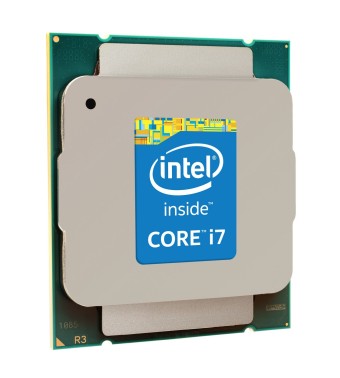
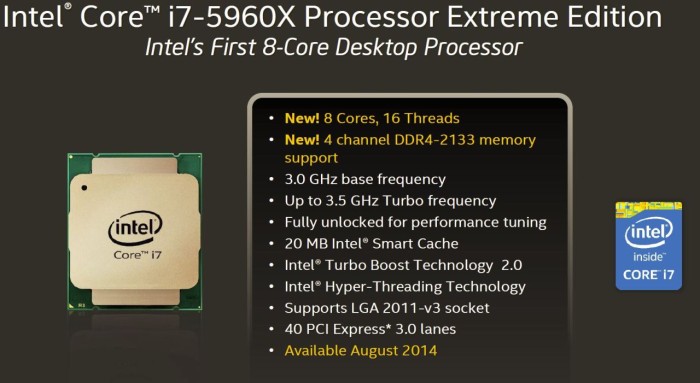
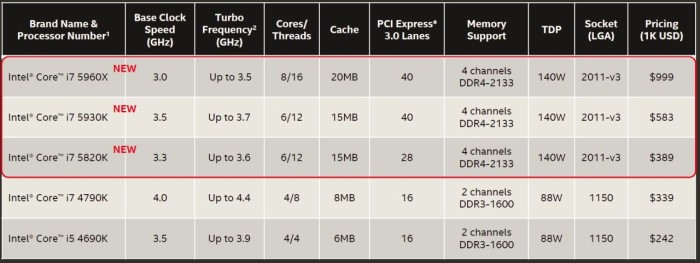
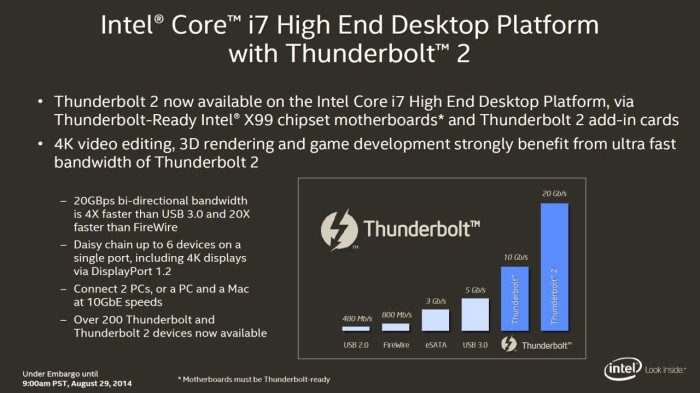
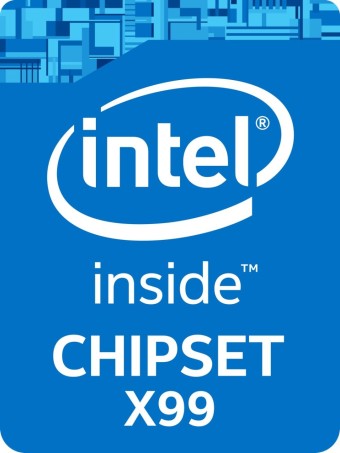
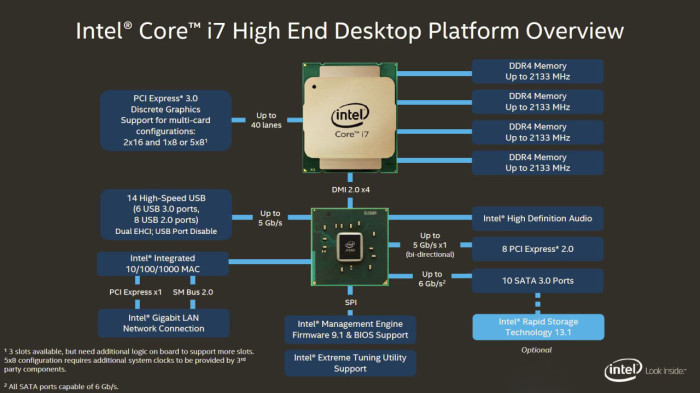
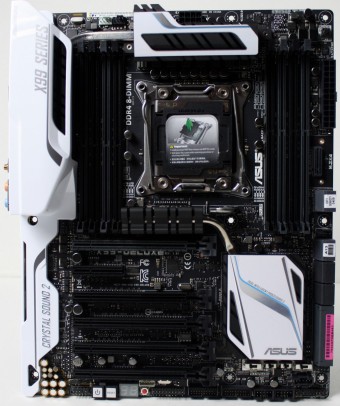
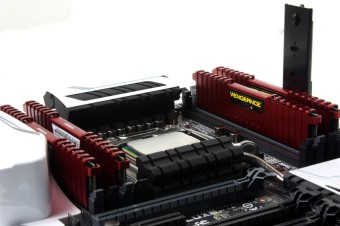

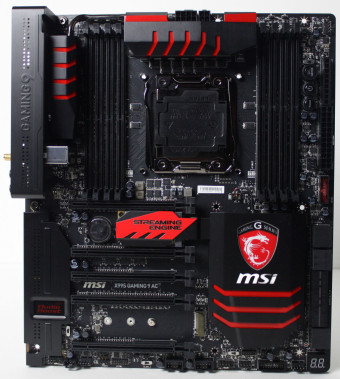
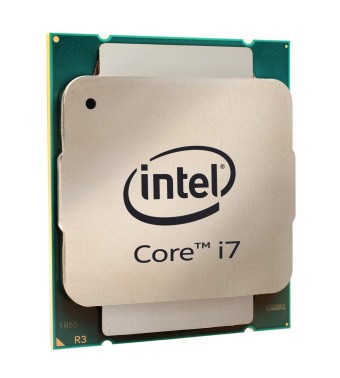
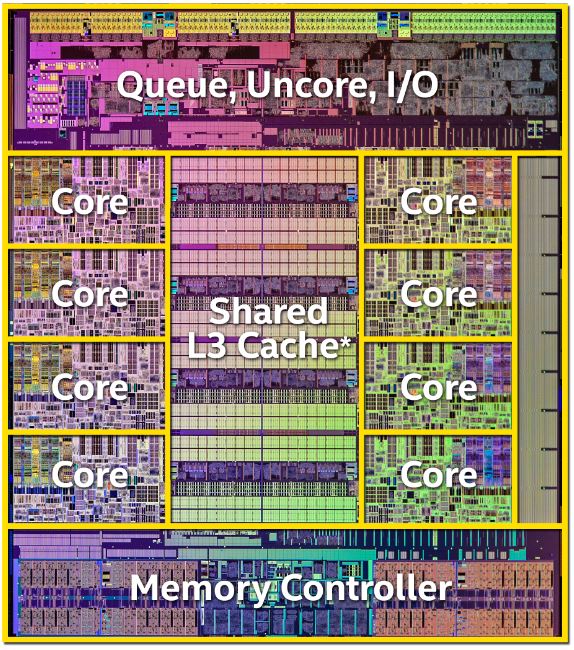
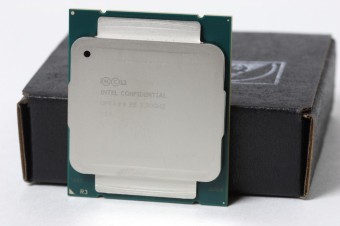
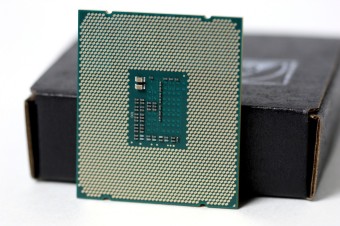
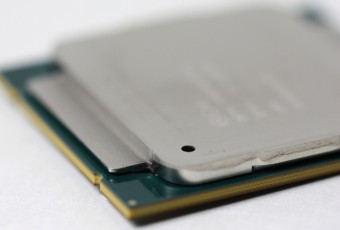

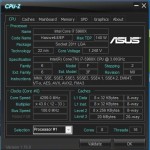
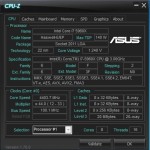
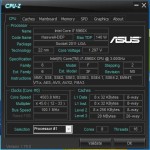
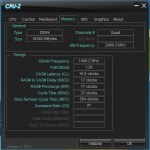
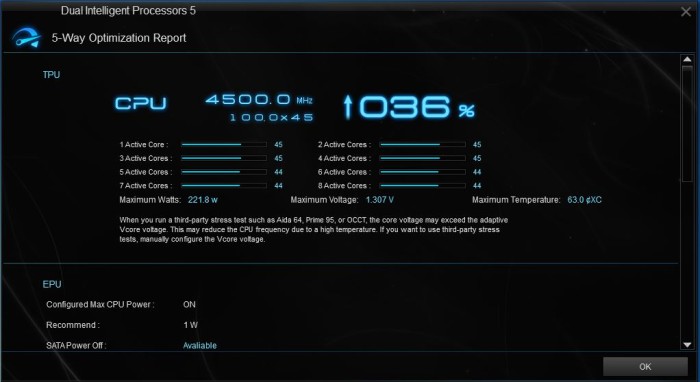

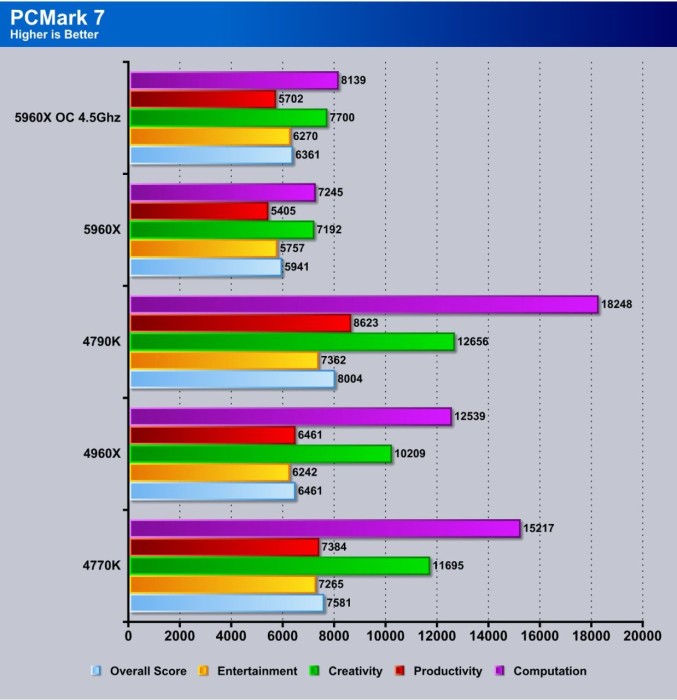
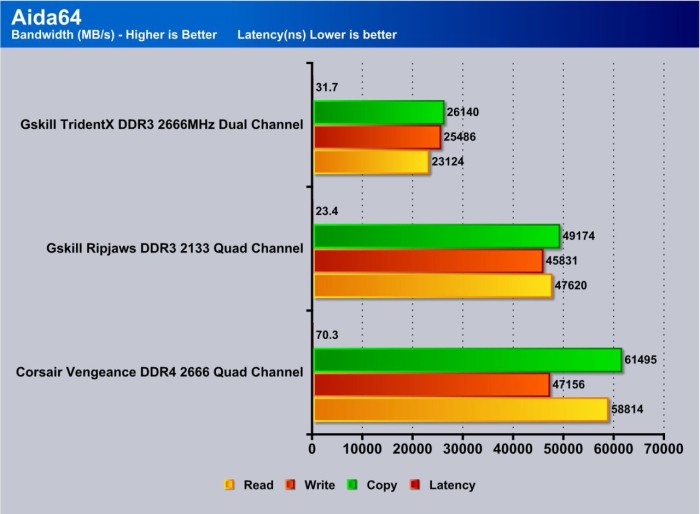
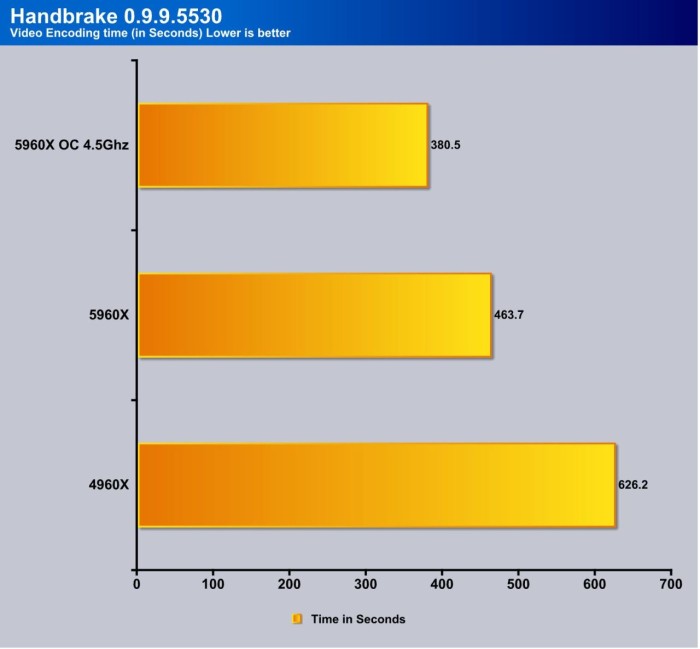

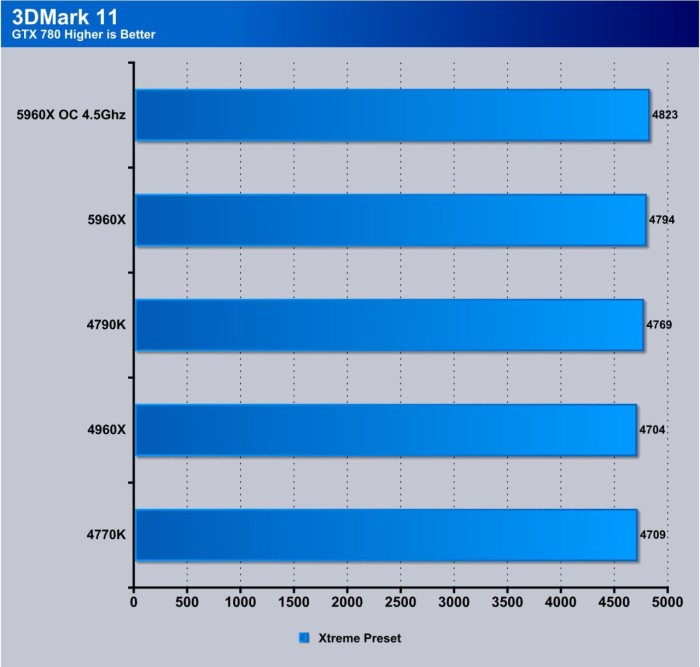
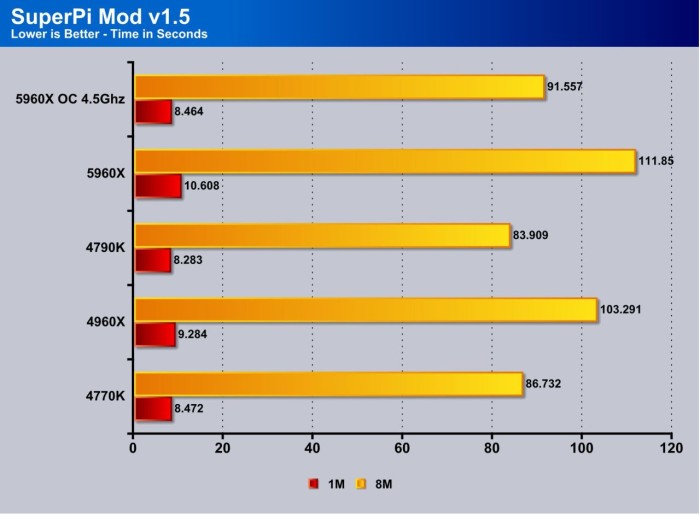
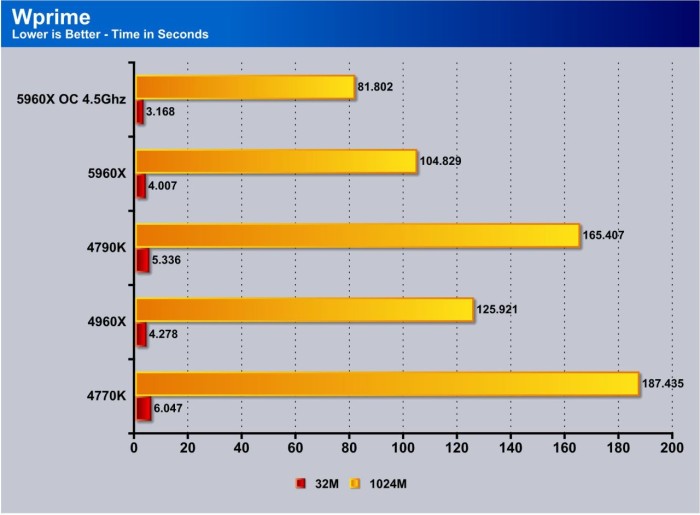
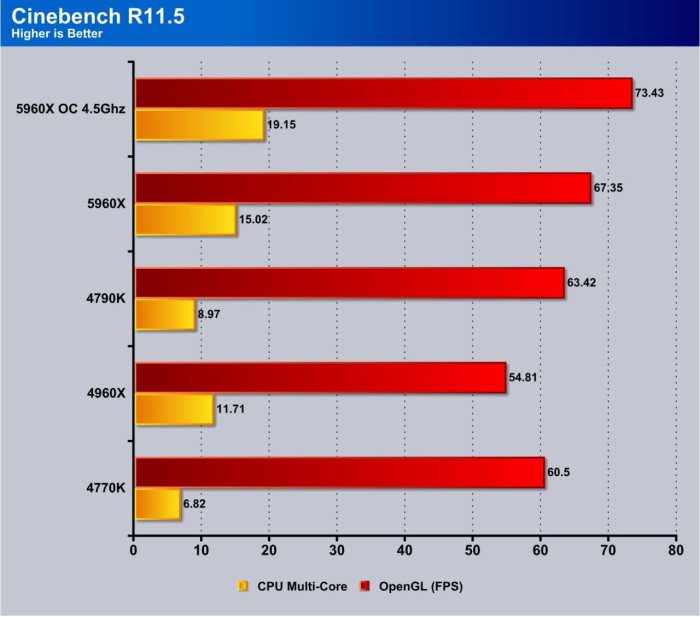

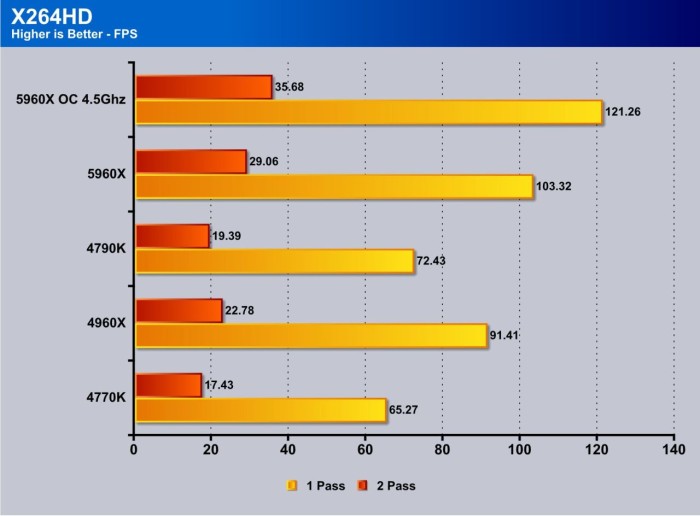

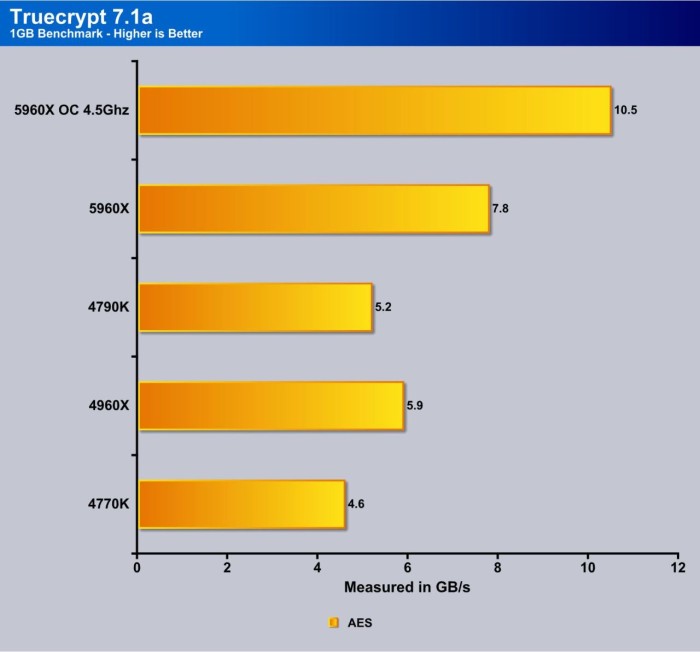
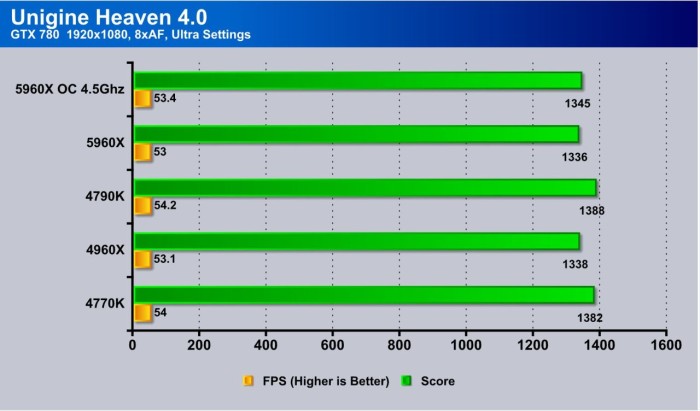

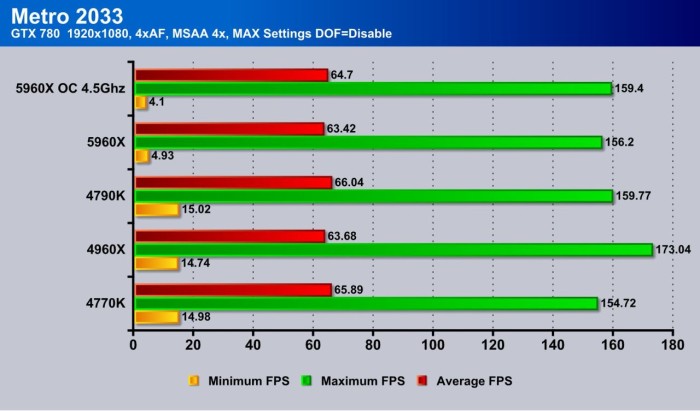
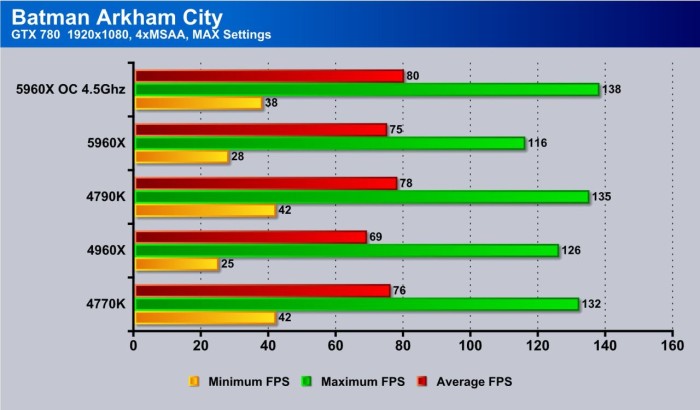
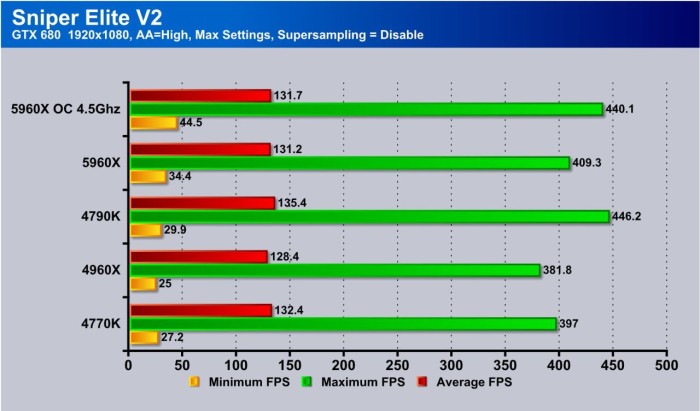

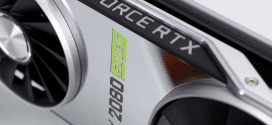






Would the i7 5960x be the best choice for running AVID Pro Tools 10 Audio production software, with lots of plugins. I already have the i7 4790K @4Ghz 16ram but when I run lots of plug ins I still have problems and have to mix plugins to a separate track so I can disable them to relieve the system, so I am looking to get the best money buy to run as many plugins as possible.
If you are talking strictly consumer desktop processors the 5960K is probably the best for heavily multithreaded programs. If you go that direction I would start with 32GB of RAM and if if possible go for 64GB. Rendering, and editing sound takes a lot of processing power. Check your program and see if it can use Video Card processing as well. For professionals doing rendering and editing they may want to look at a Dual CPU Xeon setup with more processing cores. While an Oct core will have horsepower with Xeon you can go multiple CPU’s with multiple cores and you might be better off with 16 cores 32 threads. The 5960x will likly be less expensive than a top shelf Xeon system so it depends on how much you want to spend. 5960K you can spend 1 – 2K setting up a prime system and Xeon you may have to ron Fort Knox (not recommended).
Thanks for info, I actually did try a affordable HP z800 with dual XEON X5670 6 core processors, 12 core total, 48 ram, Win 7, and I followed all of AVID’s Pro Tools instructions to optimize it and still had lots of freezing issues in sessions, that you would have to turn power off to restart. No error codes though. So yes Frys has a great deal on a complete i7 5960 for $2499 so I am going to try it out, I will try upgrading too 64 GB ram, it comes with 16gb, I think I will stick with the NVIIDIA GTX 960 2GB card it comes with, since I don’t do Video editing only audio. Thank you so much for your info.
That’s pretty high on the end cost, the processor is a good chunk, at that price I would want a 480GB 550MB/s SSD with a couple of TB of platter space on a good solid board with good OCing abilities. You can probably build it with less expense. I’m not sure the additional two cores on the 5960k will give you much advantage in that situation. You may want to consider the 5830K with 6 cores, it’s a workhorse, OC’s well with Vendor auto overclockers and cost 500 less. If money is not an issue then by all means there’s no feeling like running the top end processor. One thing to try is write down the load order of plugins, then test each plugin, check you available memory each time. If it crashes when you run out of memory then it’s probably a virtual memory conflict. If you have ample memory left then it’s a conflicting plugin. I would suspect a conflicting plugin or virtual memory problem. By loading the exact same order each time then testing the plugins you might be able to track down the trouble. Enjoy the 2011v3 platform Intel did a heck of a good job with it.